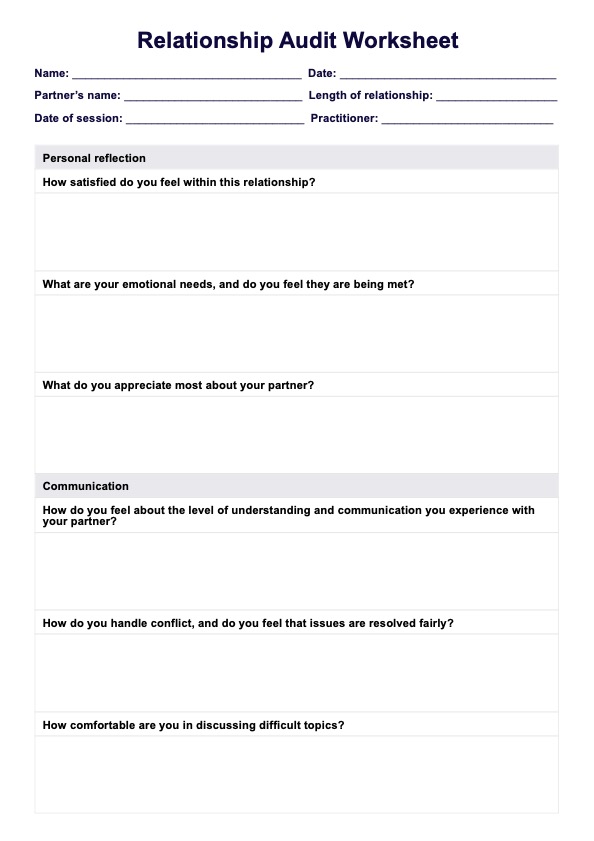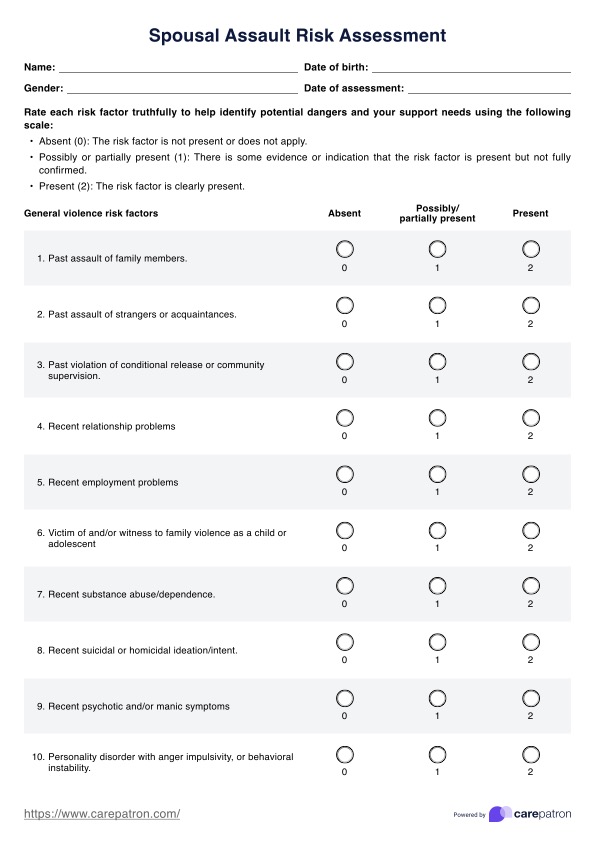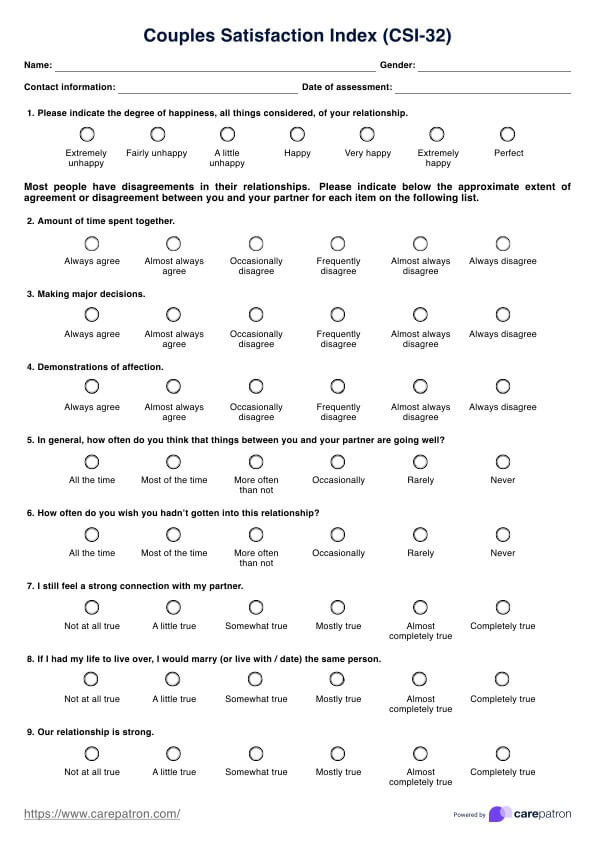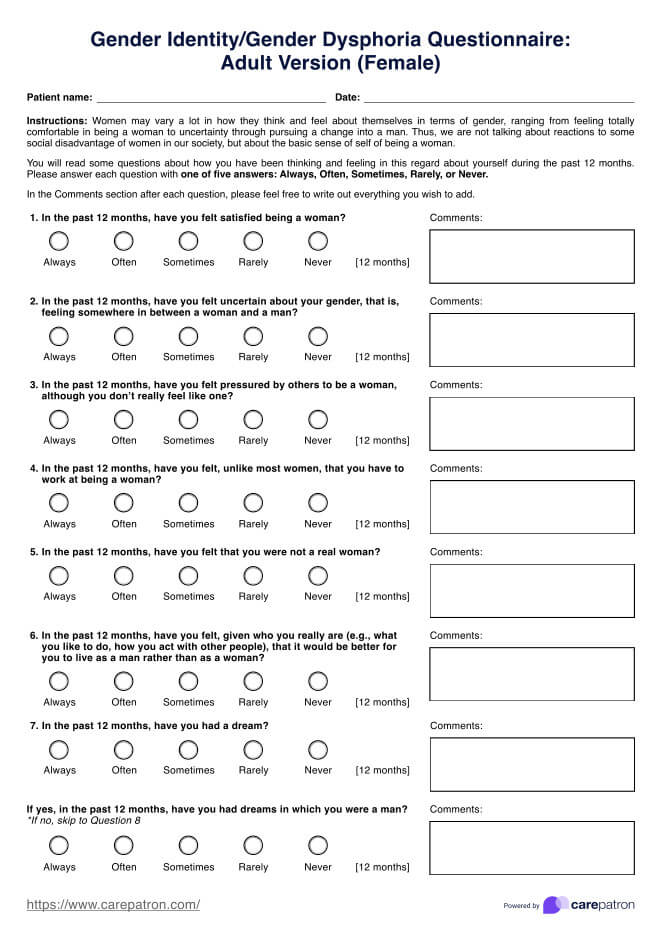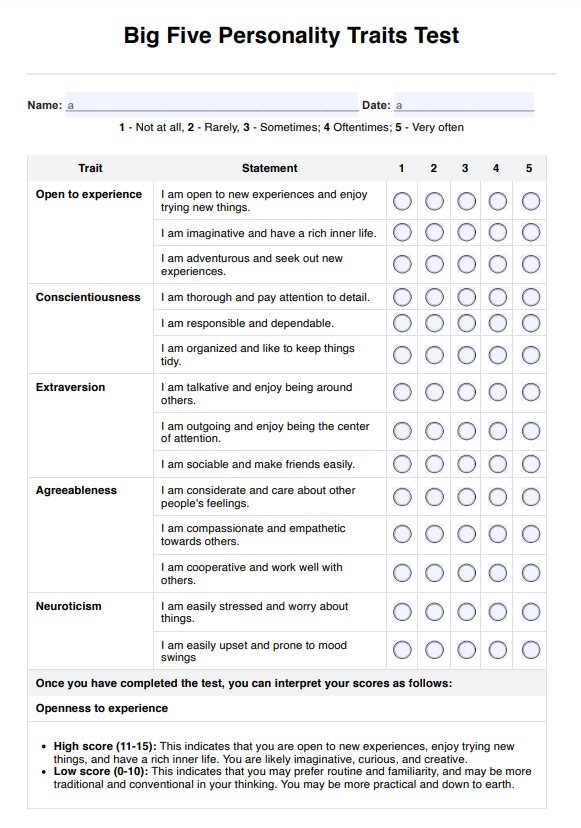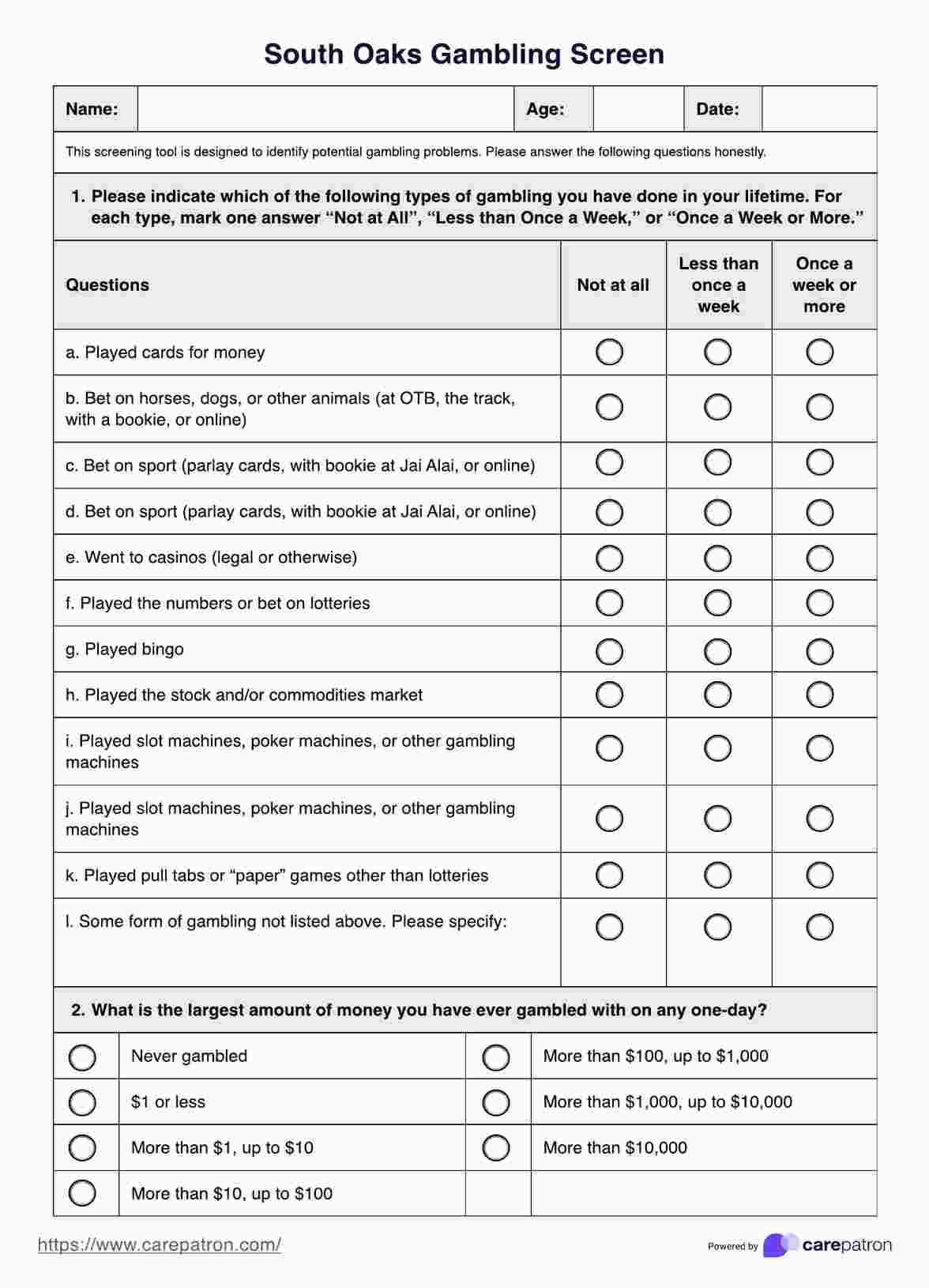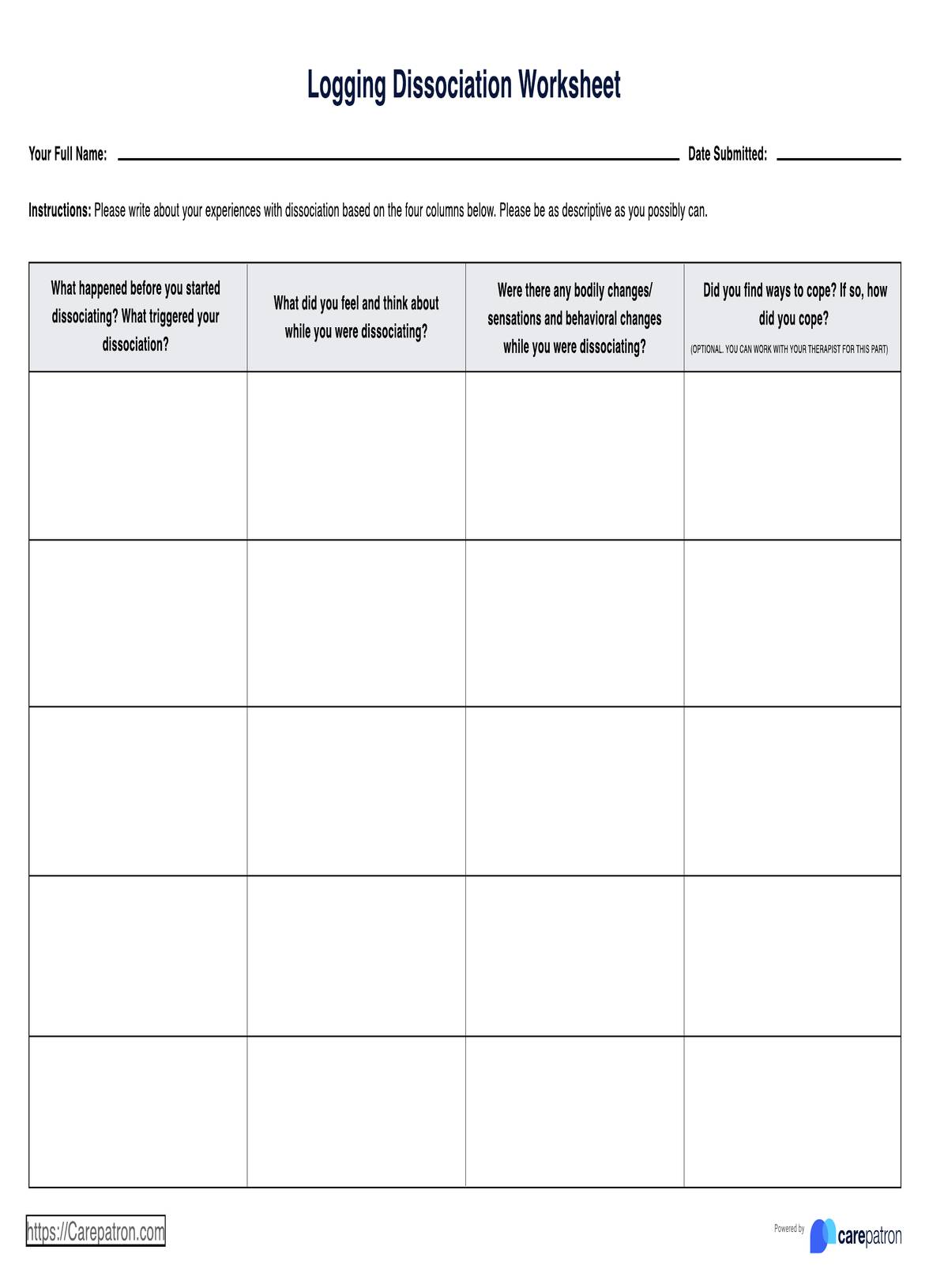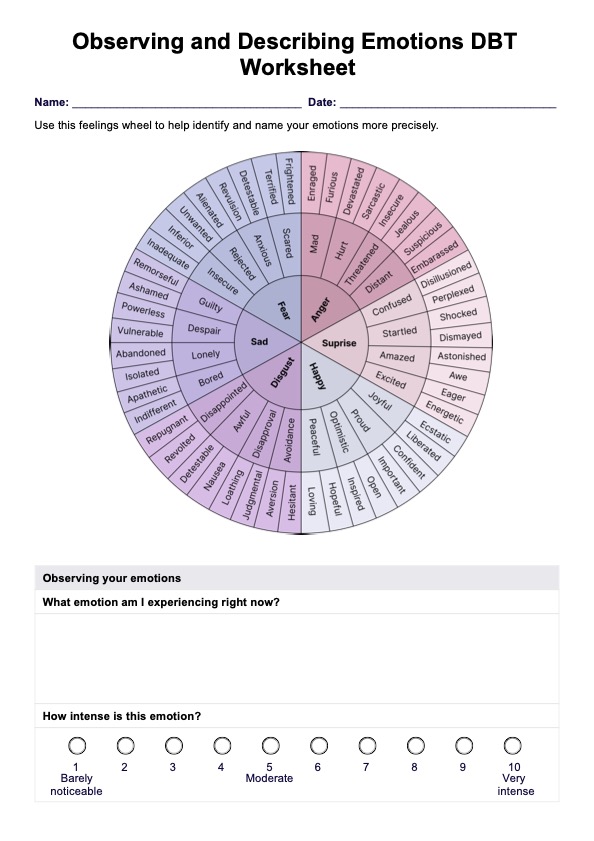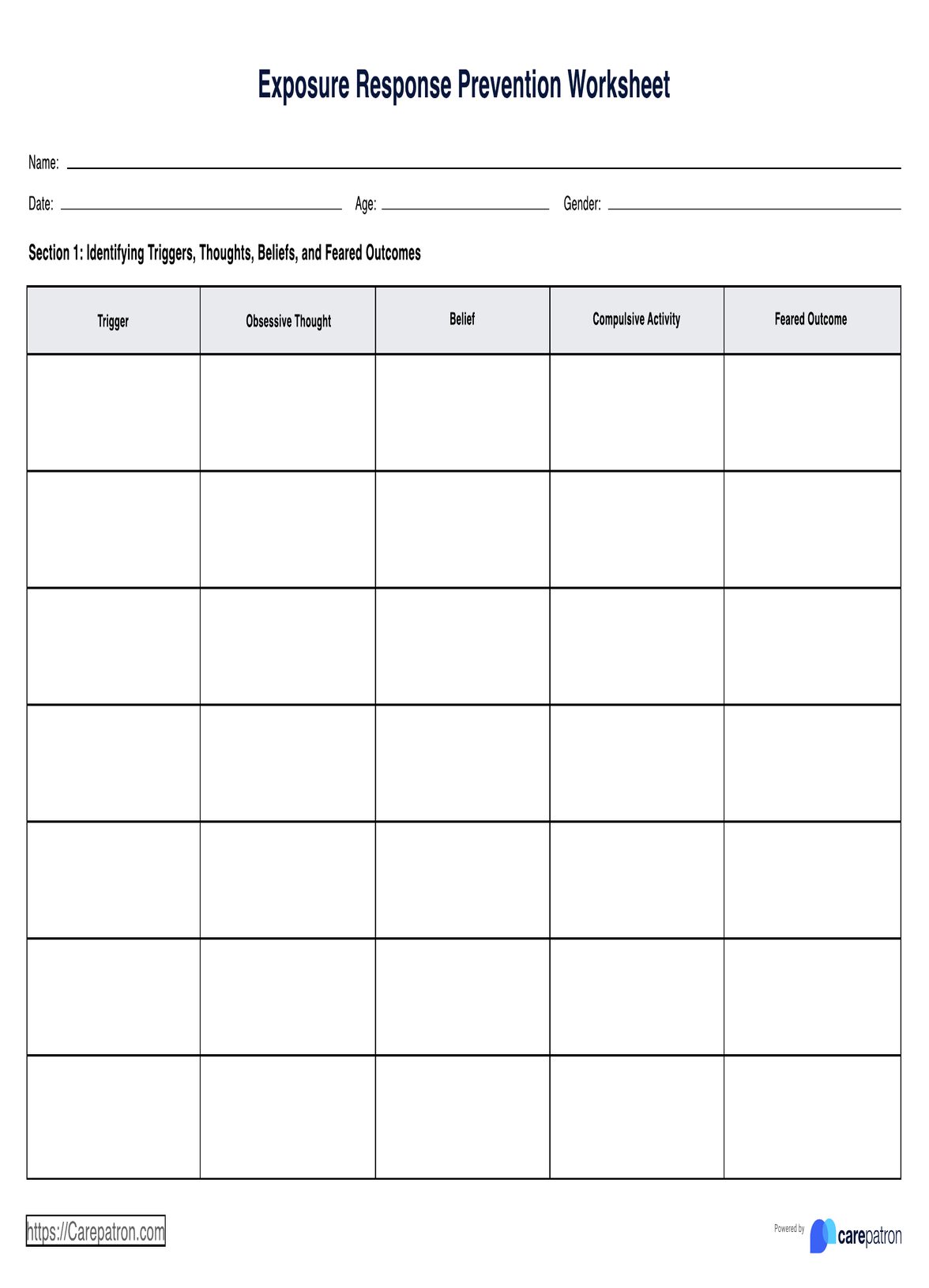Amicable Divorce Checklist
Help clients simplify the divorce process with this Amicable Divorce Checklist for a smooth and fair separation.


What is an Amicable Divorce Checklist?
An Amicable Divorce Checklist is a guide designed to help spouses navigate the divorce process with minimal conflict. This checklist aims to address key issues such as property division, child support, spousal support, and other critical aspects of separation. Unlike a contested divorce, an amicable divorce focuses on cooperation and compromise, allowing parties to resolve disputes through divorce mediation or other collaborative methods.
The goal is to reach an agreement reflecting the spouse's and children's best interests. This process often includes creating a parenting plan, assessing marital property, and organizing important documents like tax returns, bank accounts, and retirement accounts.
Whether deciding on the family home, addressing court orders, or determining primary custody, this tool helps parties stay focused and forward-thinking during the divorce proceedings. For example, addressing each partner's financial situation and identifying assets like personal property and investments can clarify the path to a fair resolution. While some cases may necessitate court involvement due to unresolved money disputes, an amicable split enables most agreements to be handled outside of court. This approach saves time and money and allows divorced parties to focus on rebuilding their lives post-separation.
Amicable Divorce Checklist Template
Amicable Divorce Checklist Example
How does this Amicable Divorce Checklist work?
During your session with your clients undergoing a divorce, you may utilize our printable Amicable Divorce Checklist template to help them ensure a smooth and equitable process. Here are the key steps:
Step 1: Access the template
You can access the Amicable Divorce Checklist from this guide. Click "Use template" to open it within the Carepatron platform. You can also click "Download" to get a free fillable PDF copy of this form.
Step 2: Guide clients through each task
Before starting, guide and encourage clients to carefully review each task on the checklist. Understanding the importance of each task ensures they can approach the process with clarity and address all necessary details without missing anything.
Step 3: Complete each task
As clients move through the checklist, they should complete each task—whether handling finances or making custody arrangements—and tick off each item as completed. There is also an additional space for clients to note any other important details that may arise during the process, ensuring they have everything recorded.
Step 4: Regularly review and update the checklist
Encourage clients to review and update the checklist as they go. Once completed, they should review or consult with their lawyer or mediator to ensure all agreements are legally binding and meet court requirements while tracking the necessary documents for filing.
When would you use this template?
This checklist is ideal for parties seeking clarity and order after separation. It allows them to rebuild their lives after divorce with less stress and conflict. Here are four common scenarios where this template proves helpful:
When pursuing an amicable split
If both spouses agree on resolving critical issues like property division, child support, and spousal support without conflict, this checklist ensures every aspect of the divorce proceedings is addressed. It helps organize tasks like dividing joint accounts, addressing debts, and preparing a parenting plan in the spouse's and children's best interests.
During divorce mediation
This checklist provides a structured framework for couples pursuing divorce mediation. It helps identify and equitably distribute marital property like the family home and retirement accounts. It streamlines the process for an uncontested divorce by guiding spouses through compiling essential documents, such as tax returns and financial records. It ensures tasks like custody decisions and court orders are completed efficiently.
When adjusting to complex financial situations
Couples with complicated finances, including multiple bank accounts, significant debts, or investments, can use this checklist to avoid missing critical details. By addressing all income, debt, personal property, and marital status agreements, both parties can focus on achieving a fair and organized divorce settlement.
Benefits of using this Amicable Divorce Checklist PDF
The Amicable Divorce Checklist offers significant advantages for couples navigating the divorce process with minimal conflict and maximum efficiency. Using this template:
Reduces stress and saves time
The checklist removes the uncertainty of what to consider during the divorce process, providing a clear guide for couples. This reduces stress by outlining essential tasks, so couples don't need to worry about missing necessary steps. Additionally, they can easily jot down notes if anything new arises, ensuring everything is addressed efficiently.
Streamlines the divorce process
The checklist offers a clear framework for addressing issues like property division, child support, and spousal support. It helps couples manage complex tasks, such as dividing shared bank accounts and documenting retirement funds while focusing on their children's best interests.
Promotes fair and equitable agreements
This tool ensures couples can discuss matters like the equitable distribution of marital property, including personal and joint accounts. It guides them in creating a parenting plan and finalizing a divorce settlement. Avoiding contentious disputes facilitates an amicable split and allows both parties to move forward.
Commonly asked questions
The time it takes to complete an Amicable Divorce Checklist depends on the complexity of the divorce and how quickly both parties can agree on issues. On average, it may take days to a few weeks, depending on the availability of documents and the time needed for discussion and decision-making.
Amicable Divorce Checklists are used when couples aim for a cooperative divorce process. They are particularly beneficial when both parties agree to negotiate terms without conflict, focusing on fair asset division, child and parent custody arrangements, and mutual respect.
Amicable Divorce Checklists are used to systematically work through each item, ensuring all aspects of the divorce are addressed. Couples discuss each point in the checklist, making decisions on financial splits, custody, and other arrangements, often with legal or mediation support.

.jpg)
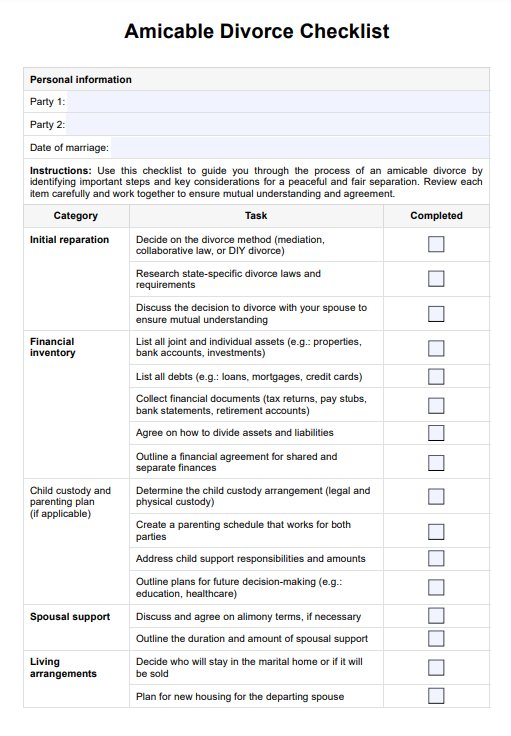
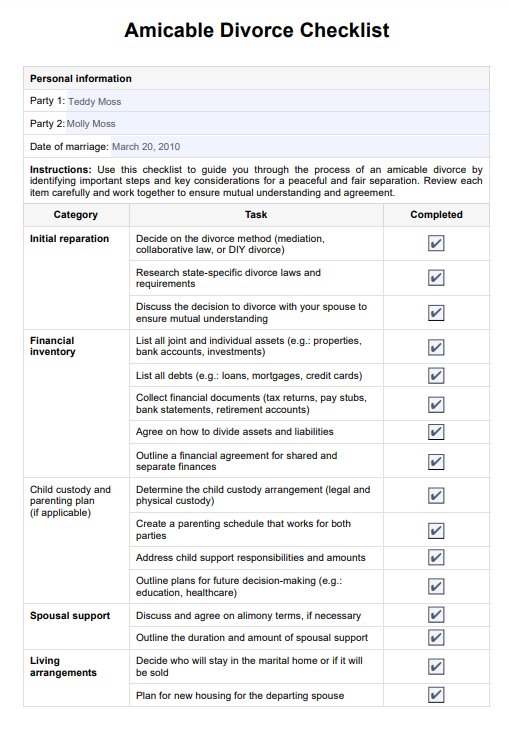



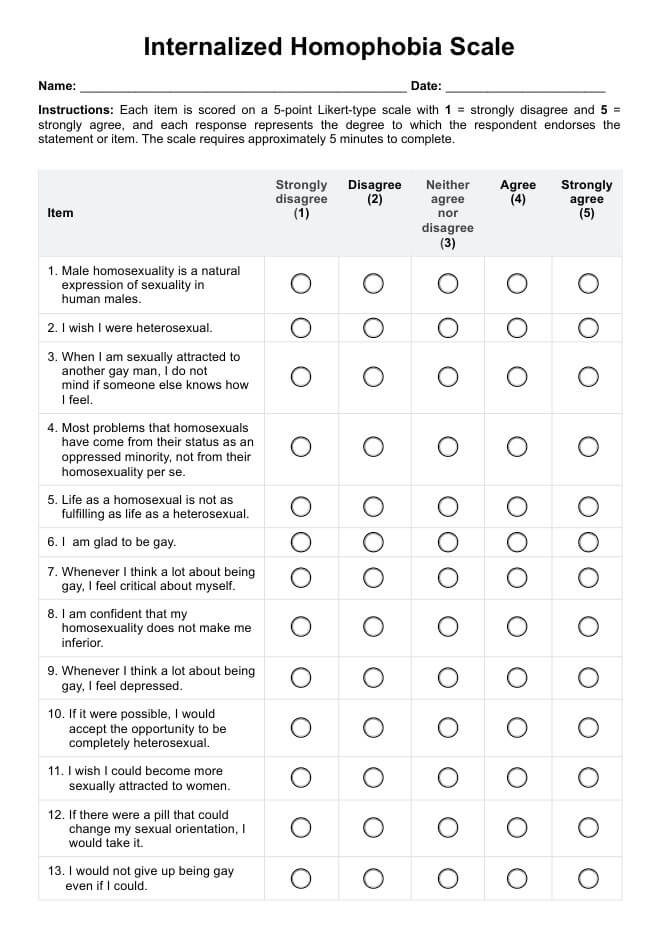










-template.jpg)


